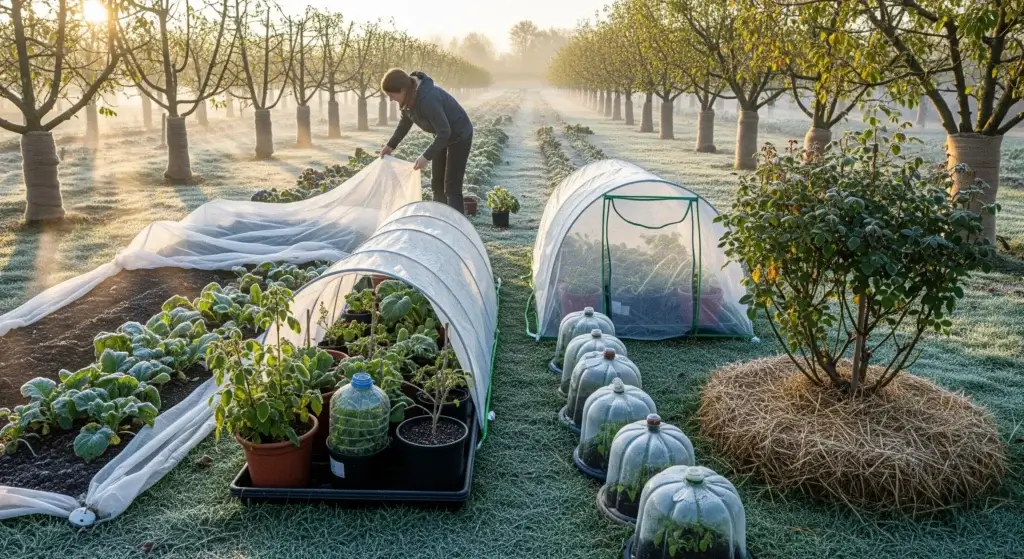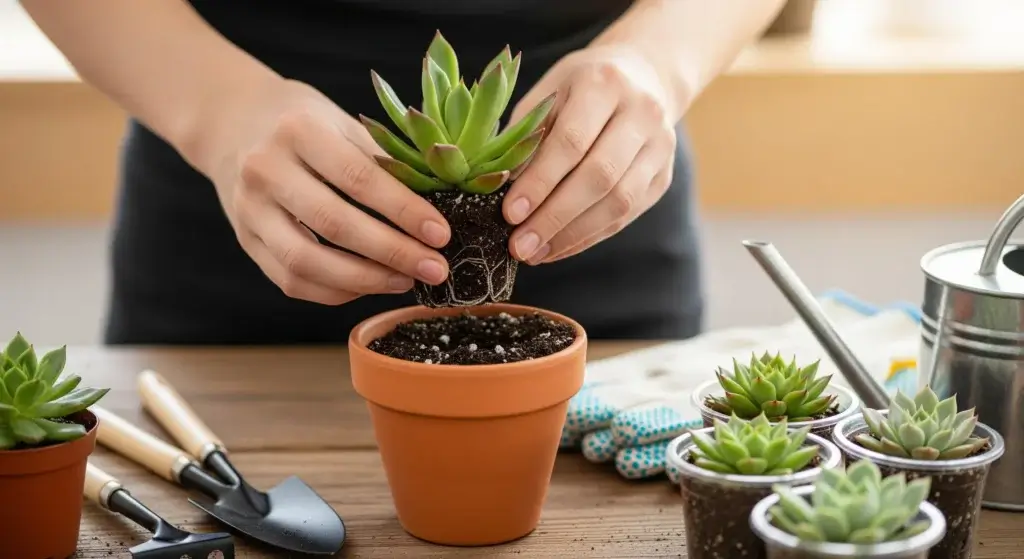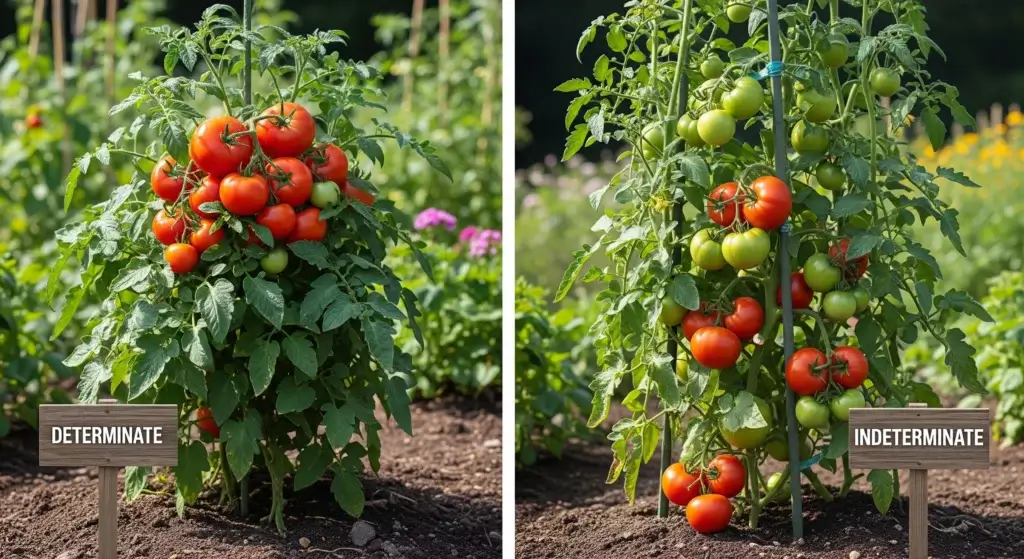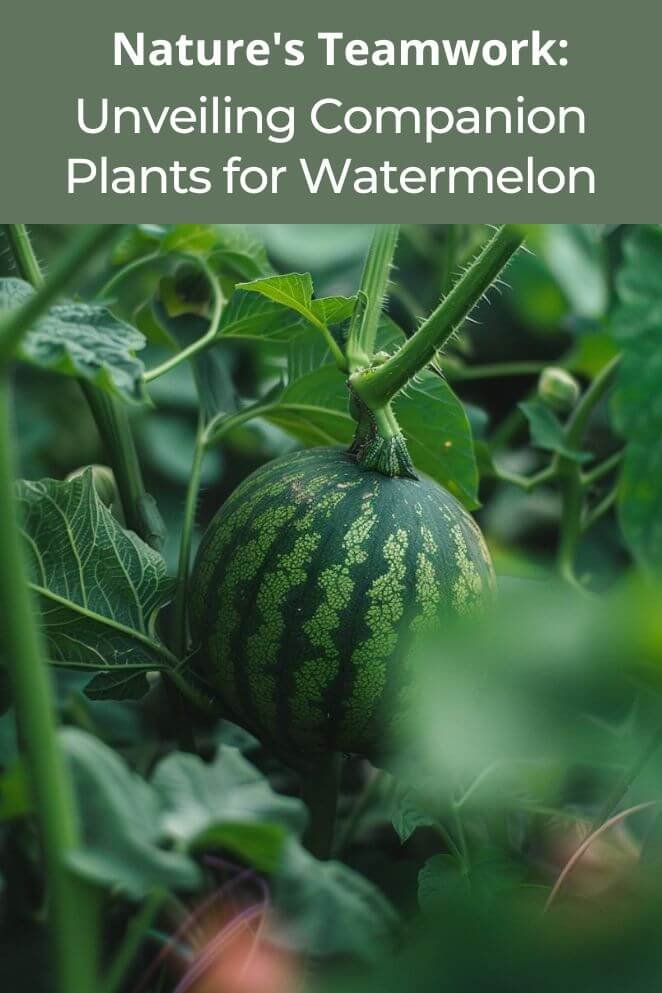
Watermelons are a favorite summer treat, but growing them successfully in your garden can be challenging.
One effective strategy to boost your watermelon yield and protect your plants is to use companion planting.
In this guide, we’ll explore the best companion plants for watermelons, why they work, and how to make the most of this gardening technique.
Why Companion Plant Watermelons?
Watermelons are plants that require a lot of nutrients and space to grow properly.
Companion planting can help with these challenges in several ways:
Suppressing weeds
Companion plants can cover the soil around watermelons, which helps prevent weeds from growing.
This reduces the competition for nutrients and water, allowing the watermelon plants to thrive without fighting off weeds.
- Read also: Sweet Companions: Unveiling the companion Plants for Strawberries
- Read also: Unveiling the Best Companion Plants for Luscious Cucumbers
Improving soil health
Some companion plants have deep roots that can break up compacted soil, allowing better water and nutrient absorption for the watermelon roots.
Additionally, certain plants can add nutrients to the soil through their natural decomposition process, making the soil healthier overall.
Deterring pests
Many companion plants naturally repel pests that might otherwise harm watermelon plants.
For example, planting marigolds or nasturtiums near watermelons can deter insects like aphids or cucumber beetles, which are common pests for watermelon vines.
Attracting beneficial insects
Certain companion plants attract beneficial insects such as pollinators (like bees) or predatory insects (like ladybugs) that feed on pests.
These insects can help pollinate watermelon flowers and control pest populations naturally, promoting healthier growth for your watermelon plants.
Enhancing growth
Some companion plants release chemicals into the soil that can benefit neighboring plants.
For watermelons, planting herbs like basil or oregano nearby may enhance their growth and flavor.
Additionally, companion plants can provide shade or support, which can be beneficial for sprawling watermelon vines.
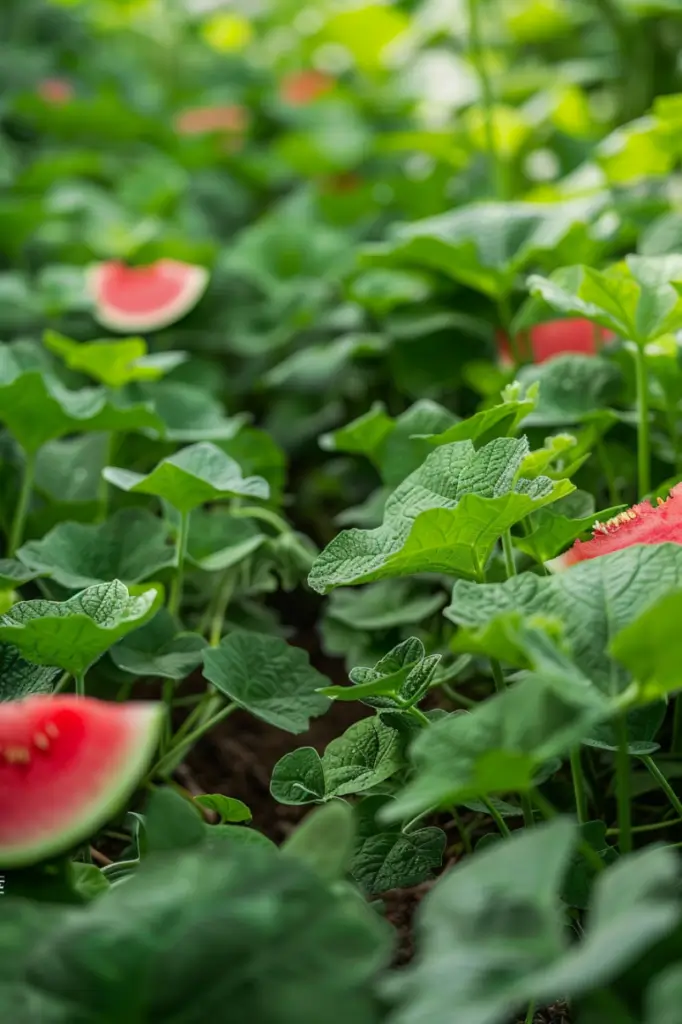
Best Companion Plants for Watermelons
Choosing the right companion plants can greatly benefit your watermelon garden. Here are some excellent options:
Vegetables
Lettuce
This shallow-rooted plant complements watermelons by suppressing weeds and keeping the soil moist.
Its quick growth makes it a perfect filler crop around watermelon vines without competing for nutrients.
Radish
Known for repelling cucumber beetles, radishes help protect watermelons from this common pest.
Planting radishes nearby can significantly reduce beetle damage and support healthy watermelon growth.
Flowers
Dill
Attracts beneficial insects like ladybugs and lacewings, which prey on aphids and other pests harmful to watermelons.
Dill also repels unwanted insects, making it a dual-purpose companion plant.
Chamomile
Draws pollinators and beneficial insects to your garden, enhancing watermelon pollination and fruit development.
Its natural pest-repelling qualities add to its value as a companion to watermelons.
Cosmos
These flowers attract essential pollinators such as bees and butterflies, crucial for watermelon pollination.
They also add vibrant colors to your garden, making it visually appealing while supporting ecosystem health.
Pineapple sage
Attracts pollinators and repels pests with its bright red flowers, which hummingbirds find particularly attractive.
This plant contributes to a balanced garden ecosystem beneficial for watermelon growth.
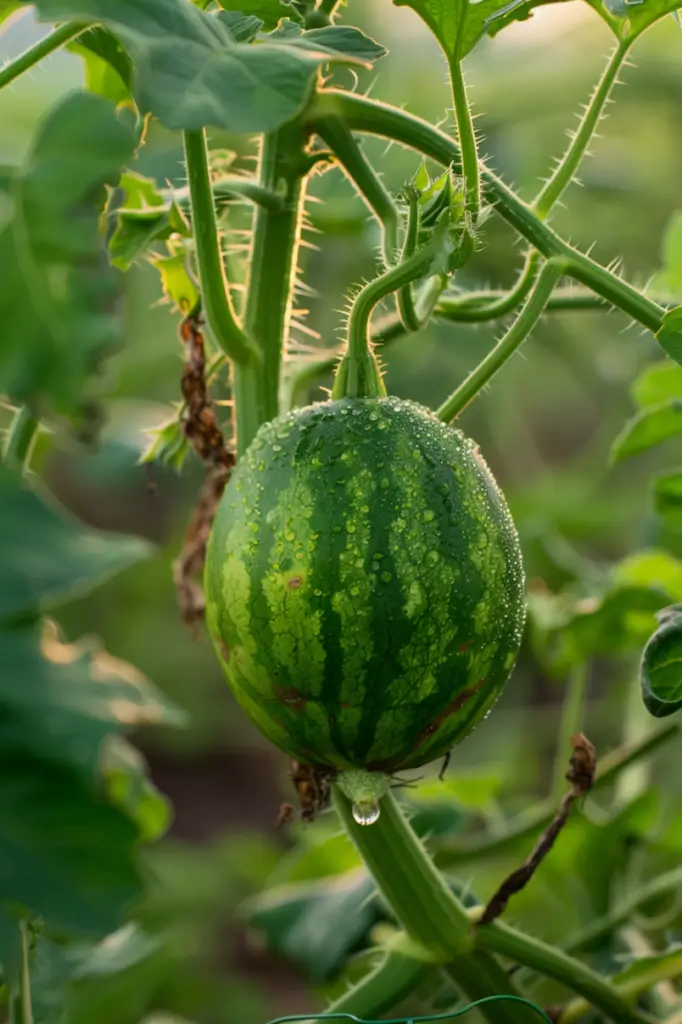
Herbs
Mint
Known for its strong scent that deters garden pests, mint also attracts beneficial insects like earthworms.
Planting mint in containers near watermelons prevents it from spreading uncontrollably in your garden.
Oregano
Aromatic oregano not only deters pests but also enhances soil health around watermelon plants.
Its sprawling growth can cover soil, reducing weed growth and retaining moisture.
Thyme
Repels pests such as aphids and cabbage worms while improving soil health.
Thyme’s ground-covering ability helps maintain soil moisture, supporting the growth of healthy watermelon vines.
Plants to Avoid Pairing with Watermelons
While companion planting can benefit watermelons, certain plants may not be ideal companions due to potential competition for nutrients or shared susceptibility to pests and diseases.
Here are plants to avoid pairing with watermelons:
Potatoes
Potatoes can attract diseases like blight, which may also affect watermelons.
Planting them together can increase the risk of spreading diseases between these crops.
Cucumbers
Both cucumbers and watermelons belong to the same plant family (Cucurbitaceae).
They can attract similar pests and diseases, such as cucumber beetles and powdery mildew.
Growing them together may heighten the chances of these issues affecting both crops.
Zucchini and pumpkins
These plants have similar sprawling growth habits to watermelons and can compete for space, sunlight, and nutrients in the garden.
This competition may hinder the growth and yield of your watermelon plants.
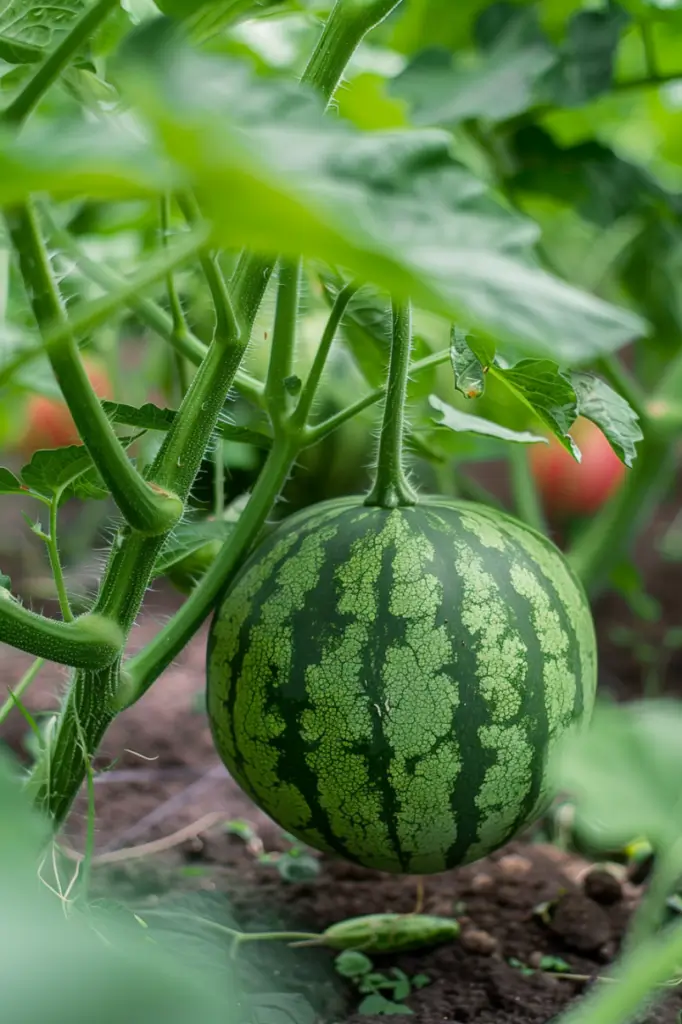
Additional Tips and Considerations
Ensuring the success of your watermelon garden involves thoughtful planning and care.
Here are some additional tips and considerations to keep in mind:
Rotate crops
Rotate your watermelon plants each year to different areas of your garden.
This practice helps prevent soil depletion and reduces the buildup of pests and diseases that can affect watermelons.
By rotating crops, you also balance nutrient uptake in the soil, promoting healthier plant growth over time.
Mulch
Apply organic mulch around your watermelon plants and companion plants.
Mulching helps retain soil moisture, suppress weeds, and regulate soil temperature.
This is especially beneficial during hot weather when water evaporation from the soil increases.
Mulch also breaks down over time, enriching the soil with nutrients.
Watering
Watermelons require consistent moisture, particularly during fruit development.
It’s essential to ensure that your companion plants have similar water needs to avoid overwatering or underwatering.
Monitor soil moisture regularly by checking the soil’s dampness with your finger. Water deeply when the soil feels dry, focusing on the root zone of the plants.
Spacing
Provide adequate spacing between watermelon plants and their companions to avoid competition for resources like sunlight, nutrients, and water.
Watermelons have a sprawling growth habit, so give them enough room to spread out comfortably.
Proper spacing also facilitates air circulation, which reduces the risk of fungal diseases.

- Read also: The Ultimate Guide to Companion Plant for Luscious Potatoes
- Read also: Is Your Soil pH Right for Blueberries? Here’s How to Find Out!
Conclusion
Companion planting is a valuable technique for any gardener looking to improve their watermelon harvest.
By choosing the right plants to grow alongside your watermelons, you can enhance soil health, deter pests, and boost overall plant growth.
Remember to avoid plants that can compete for nutrients or attract harmful pests, and always consider the specific needs of your watermelon plants.

